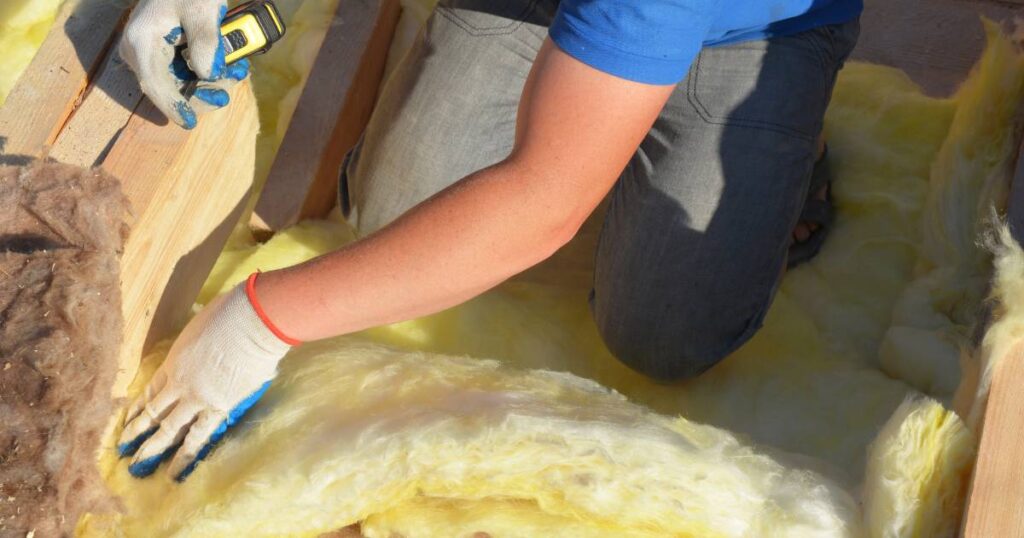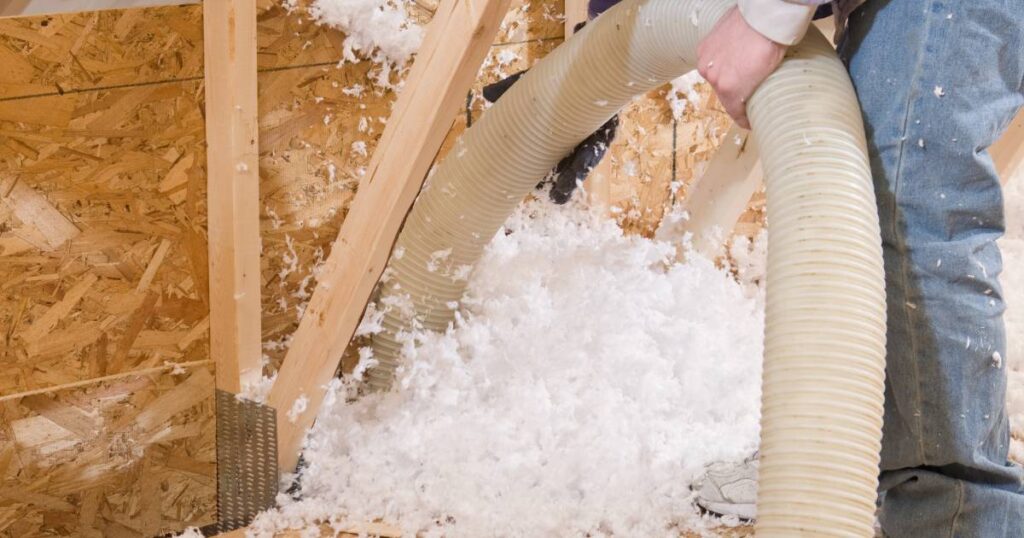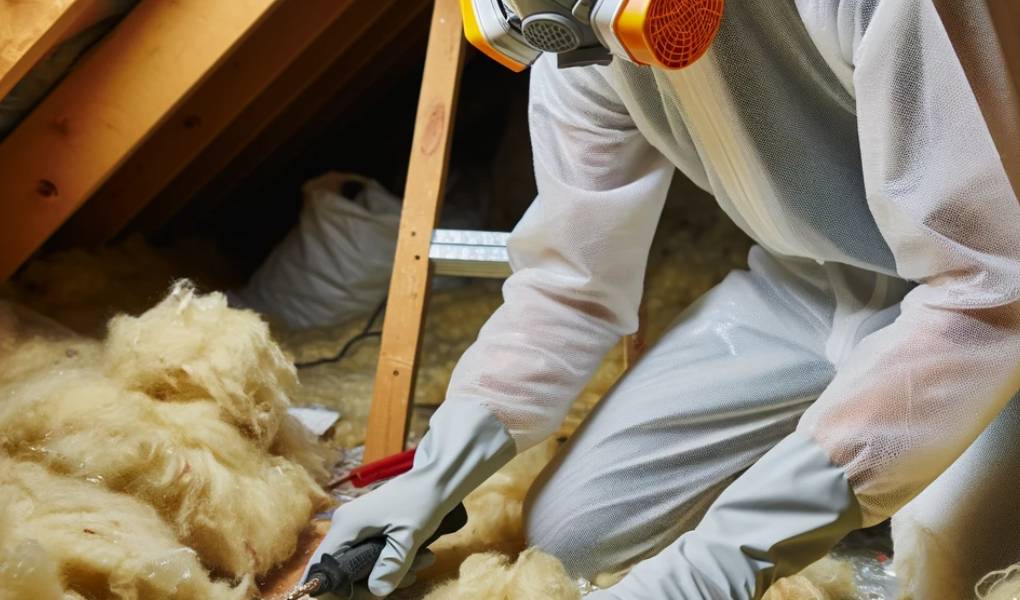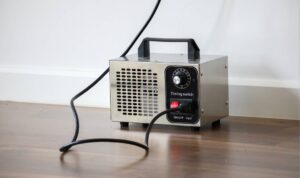What is Insulation Removal?
Insulation removal is the process of removing old or damaged insulation materials from a building in order to replace it with new, more effective insulation. This is a crucial step in improving a building’s energy efficiency, reducing energy costs, and ensuring a comfortable indoor environment. Over time, insulation can deteriorate, become contaminated with mold or pests, or simply become less effective at retaining heat or cool air. In these cases, it is necessary to remove the old insulation and install new, higher-quality materials. Insulation removal may also be necessary during renovation or construction projects, as well as in cases of water or fire damage. Proper insulation removal requires the use of specialized equipment and protective gear to safely remove and dispose of old insulation materials. Overall, insulation removal is an important aspect of maintaining a building’s energy efficiency and ensuring a healthy and comfortable living or working environment.
Benefits of Removing Insulation
Removing insulation has numerous benefits that can improve the overall efficiency and health of a building. Damaged insulation can lead to a variety of problems including reduced energy efficiency, health risks, and potential long-term expenses. By removing damaged insulation, energy efficiency can be greatly improved, reducing energy bills and creating a more comfortable indoor environment.
Leaving damaged insulation in place can also lead to a number of hazards such as rodent infestations, water damage, and mold growth. These hazards not only compromise the integrity of the building but also pose health risks to occupants.
On the other hand, removing old and contaminated insulation can lead to positive outcomes such as improved air quality and a reduction in energy bills. By replacing old insulation with new, more efficient materials, the building can maintain a more consistent temperature, reducing the reliance on heating and cooling systems. This not only saves money in the long run but also contributes to a healthier and more comfortable living or working environment.

Types of Insulation Removal
When it comes to home maintenance, insulation removal is an important but often overlooked task. Over time, insulation can become damaged, contaminated, or simply ineffective, requiring removal and replacement. There are several different types of insulation used in homes, each with its own method of removal. Whether it’s fiberglass, cellulose, foam, or mineral wool insulation, knowing the proper removal techniques is essential to maintaining a safe and efficient home. In this guide, we will explore the various types of insulation and the best practices for their removal to ensure that your home stays comfortable and energy-efficient.
Attic Space and Blown-In Insulation
Working in tight and small attic spaces presents several challenges when removing blown-in insulation. The limited space makes it difficult to move around and access all areas, especially the corners and crevices where insulation tends to settle. Additionally, the lack of ventilation and high temperatures in the attic can make the work environment uncomfortable and potentially dangerous.
Handling blown-in insulation can also pose health hazards, as it may contain harmful particles such as asbestos or fiberglass. Protective measures such as wearing a respirator, gloves, and long-sleeved clothing are essential to prevent inhalation and skin irritation. Proper ventilation and frequent breaks are also crucial to minimize exposure to the insulation fibers.
To safely remove insulation in tight attic spaces, creative techniques can be employed. Using a vacuum with a rope can allow the worker to reach difficult areas without having to crawl through the entire space. Utilizing extension poles and specialized tools can also help in accessing and removing insulation from corners and tight spots.
Overall, working in small attic spaces and handling blown-in insulation requires careful planning, protective gear, and innovative approaches to ensure the safety and health of workers.
Fiberglass Batt Insulation
To properly dispose of fiberglass batt insulation, it is essential to wear protective gear such as gloves, a mask, and goggles to avoid skin irritation and respiratory issues. Start by cutting the insulation into manageable sections using a utility knife, being careful not to tear the insulation and release fiberglass particles into the air.
Once the insulation is cut, carefully place it into large plastic bags for disposal. It is important to securely seal the bags to prevent any fibers from escaping. When handling the bags, make sure to do so carefully to minimize the risk of exposure to fiberglass particles.
Proper disposal of fiberglass batt insulation is crucial to avoid it becoming a fire hazard. Fiberglass is highly flammable and can pose a serious risk if not disposed of correctly. By placing the insulation in plastic bags and sealing them securely, the risk of it igniting and causing a fire is greatly reduced.
In conclusion, when disposing of fiberglass batt insulation, always wear protective gear, cut the insulation into manageable sections, and carefully place it in large plastic bags for disposal. This not only ensures the safety of those handling the insulation but also helps prevent it from becoming a fire hazard.

Spray Foam Insulation
Spray foam insulation offers numerous benefits for existing homes, including improved energy efficiency, reduced air leakage, and increased comfort. The process involves removing old insulation from the attic to ensure the new spray foam can be properly installed. This is crucial in preventing any air or moisture issues that may have occurred with the old insulation, and allows for a more effective and long-lasting insulation solution.
RetroFoam of Michigan specializes in assisting with this process by providing professional insulation removal and installation services. Their team of experts can ensure that the old insulation is completely removed and the new spray foam insulation is properly installed to improve airflow and insulation efficiency throughout the home.
By choosing spray foam insulation and utilizing the services of RetroFoam of Michigan, existing homeowners can experience a significant improvement in energy savings, indoor air quality, and overall comfort. RetroFoam of Michigan’s expertise in airflow improvement and insulation installation can make a notable difference in the effectiveness of a home’s insulation system.
Loose-Fill Insulation
When handling loose-fill insulation, it is important to use a specialized high-powered vacuum with a HEPA filter to properly contain and remove the insulation particles. Wear protective clothing, including coveralls, gloves, and a mask, to prevent inhalation and skin contact. Seal off areas of the home where insulation is being removed to prevent the spread of particles.
Research local disposal and recycling procedures for proper disposal of the insulation. Find a certified facility that can responsibly dispose of the insulation and follow their guidelines for drop-off or pickup. Additionally, check for nearby fiberglass insulation manufacturers that may have a recycling program for the insulation.
By following these steps and using the appropriate equipment, you can safely handle loose-fill insulation while minimizing the impact on your health and the environment.
Tools Needed for Removal Process
When it comes to removing unwanted items or materials, having the right tools is essential for a smooth and efficient process. Whether it’s clearing out a cluttered space or demolishing a structure, having the necessary tools on hand can make all the difference. From heavy-duty equipment to smaller handheld tools, being prepared with the right supplies can save time and effort. In this article, we will discuss the various tools needed for different removal processes, including demolition, decluttering, and general clean-up. Whether you’re tackling a small DIY project or a larger scale demolition job, having the right tools at your disposal will ensure a successful and safe removal process.
Commercial-Grade Insulation Removal Vacuum
Our commercial-grade insulation removal vacuum is designed to efficiently remove insulation from attics, sidewalls, and crawl spaces, making it a versatile tool for any insulation removal project. Its powerful suction and durable construction make it suitable for heavy-duty use in commercial settings. The benefits of this vacuum include its time-saving efficiency, ease of use, and ability to handle various types of insulation materials.
Specific models suitable for commercial use include the ProVac 2000 and the InsulMaxx 5000, both of which are designed to handle large-scale insulation removal projects. These vacuums are compatible with our insulation removal bags, which are available in various sizes to accommodate different quantities of removed insulation. Plus, when purchasing multiple boxes of insulation removal vacuum bags, customers can take advantage of quantity discounts, making it a cost-effective solution for commercial operations.
In summary, our commercial-grade insulation removal vacuum offers efficiency, durability, and compatibility with a range of insulation removal bags, making it a valuable asset for any commercial insulation removal project.
Vacuum Hoses and Other Accessories
Vacuum hoses for insulation removal typically come in various sizes, such as 2″, 2.5″, and 3″ diameters, to fit different vacuum models. These hoses are commonly made of durable and flexible materials like polyurethane or PVC to withstand the wear and tear of insulation removal. Additionally, accessories like hose cuffs, connectors, and hose clamps are essential for securing the vacuum hoses and ensuring a proper seal for effective insulation removal. These accessories are usually made of sturdy materials like steel or plastic to ensure compatibility with a wide range of vacuum models.
In addition to vacuum hoses and accessories, other tools and equipment that may be required for efficient insulation removal include insulation removal bags, hose reels, and insulation removal vacuums with adequate horsepower and capacity. Insulation removal bags are typically made of heavy-duty polyethylene and come in various sizes to accommodate different amounts of insulation debris. Hose reels allow for easy storage and transportation of vacuum hoses, while high-powered insulation removal vacuums are essential for quickly and effectively removing various types of insulation materials.

Floor Joists and Attic Access
To identify and reinforce floor joists and attic access points in your home, start by locating the existing floor joists in the area where the new attic space will be created. Consult with a structural engineer to determine the load capacity of the current floor joists and access points, taking into consideration the weight of the new attic space. This will help you understand if any modifications are needed to support the additional weight.
To reinforce the floor joists, you may need to install additional joists, use joist hangers, or sister joists to the existing ones. Adding blocking between the joists can also help distribute the load. For attic access points, consider installing a reinforced ladder or adding additional framing around the opening to support the weight of a ladder and person entering the attic space.
It’s important to follow local building codes and regulations when reinforcing or modifying floor joists and attic access points. If in doubt, consult with a professional contractor or structural engineer to ensure the modifications are done correctly and safely.
Safety Measures to Take During Removal Process
When it comes to the removal process, ensuring safety measures are in place is essential to protect both the individuals carrying out the removal and the surrounding environment. Whether it’s moving heavy furniture, performing a home renovation, or dealing with hazardous materials, taking the necessary precautions can prevent accidents and injury. From lifting techniques to proper use of protective gear, these safety measures are crucial for a smooth and incident-free removal process. It is important to prioritize safety to minimize risks and ensure a successful and safe removal process.
Wear Protective Gear
When working in the attic, it is crucial to prioritize safety by wearing the necessary protective gear. This includes safety goggles to protect your eyes from dust and debris, ear protection to reduce the risk of hearing damage from loud noises, a dust mask to avoid inhaling insulation particles and other contaminants, and a hard hat to guard against potential head injuries from low-hanging objects or accidentally bumping into rafters.
In addition to these essentials, it is important to wear gloves and long sleeves to safeguard against fiberglass irritation and other potential hazards. Fiberglass insulation, in particular, can cause skin irritation and itching, so covering your arms and hands with the appropriate clothing is imperative.
By wearing all of this attic safety gear, you can minimize the risk of injury and exposure to harmful substances while working in this confined space. Always be sure to inspect your gear before use, and replace any damaged or worn items to ensure maximum protection. Your safety should always be the top priority when working in the attic.
Proper Ventilation and Indoor Air Quality Considerations
Proper ventilation and indoor air quality considerations are crucial when dealing with attic insulation. Poor ventilation can lead to a buildup of moisture, mold, and harmful pollutants in the air, which can pose significant health risks. These hazards can have a direct impact on respiratory health, leading to allergies, asthma, and other respiratory issues. (read more about crawl space dehumidifier)
Adequate ventilation in the attic space is important to ensure the proper circulation of air and to prevent the accumulation of harmful substances. When removing or installing attic insulation, it is essential to consider factors such as the type of insulation being used, the ventilation systems in place, and any potential air quality concerns. It is recommended to consult with a professional to ensure that proper measures are taken to address ventilation and indoor air quality to mitigate any potential health risks. By prioritizing ventilation and indoor air quality considerations in attic insulation projects, we can help maintain a safe and healthy indoor environment for all occupants.
Cost of Insulation Removal Services
The cost of insulation removal services can vary depending on several factors. The size of the area being insulated, the type of insulation being removed, and any additional services required can all affect the overall cost. The size of the area will impact the amount of labor and materials needed, while the type of insulation, such as fiberglass, cellulose, or foam, can affect the difficulty of removal and disposal. Additional services, like asbestos testing or air sealing, can also add to the overall cost.
On average, insulation removal services can range from $1.50 to $3.00 per square foot. The high end of the cost spectrum can reach up to $5.00 per square foot, while the low end may be around $1.00 per square foot. These costs can vary based on the factors mentioned earlier, as well as the location and accessibility of the area being insulated.
In conclusion, the cost of insulation removal depends on various factors such as the size of the area, type of insulation, and additional services required. On average, costs can range from $1.00 to $5.00 per square foot. It’s important to consider these factors when estimating the cost of insulation removal services.
Faq’s:
What tools and safety equipment are needed for safely removing old insulation from the attic?
When removing old insulation from the attic, it is important to use the proper tools and safety equipment. To ensure safe removal, you should have a pair of gloves, long sleeves for protection against fiberglass irritation, a respirator mask with an N95 rating or higher, work goggles, and a dust mask. In addition to these essentials, it is also recommended to have a ladder for easy access to the attic, a broom and dustpan for cleaning up any debris, and a roll of plastic sheeting to cover the area.
How do you properly dispose of old insulation materials?
It is important to follow the directions provided by the manufacturer regarding proper disposal of old insulation materials. Depending on the type of insulation, you may be required to double-bag the material for removal and disposal. If dealing with materials such as mineral wool, or any other form of fiberglass insulation, you may need to wear a respirator during removal and disposal.
How can you determine if the old insulation contains any hazardous materials?
It is important to determine if the old insulation contains any hazardous materials before starting a removal project. You can do this by consulting with a professional or testing the material yourself. Professional laboratories can test insulation samples to identify any hazardous substances, such as asbestos, lead, formaldehyde, and other volatile organic compounds.
What are the potential health risks associated with removing old insulation?
Removing old insulation from the attic can present potential health risks due to airborne particles released in the process. Some of these particles may include dust, mold spores, and other pollutants that could become airborne during removal and cause respiratory irritation. In addition, improperly removing old insulation can create an environment conducive to mold growth and other hazardous materials such as asbestos or lead.
What steps should be taken to minimize the spread of dust or particles during insulation removal?
To minimize the spread of dust or particles during insulation removal, it is important to follow the directions provided by the manufacturer. Additionally, you should wear protective gear, such as gloves, long sleeves, a respirator mask with an N95 rating or higher, work goggles, and a dust mask. Furthermore, cover any furniture in the area with plastic sheeting to protect from dust and debris.
Are there any specific precautions to take when working with older types of insulation materials, such as asbestos or fiberglass?
When working with older insulation materials, it is important to take extra precautions. Asbestos is a hazardous material that can cause serious health problems and must be handled properly. If you suspect the presence of asbestos in your old insulation, it is best to consult a professional for testing and removal.
Are there any DIY alternatives to safely removing old insulation, or is professional help necessary?
DIY alternatives to safely removing old insulation may be possible in some cases, but it is highly recommended to consult a professional for advice and assistance. When removing large amounts of insulation, it is important to know the proper procedures for handling hazardous materials and disposing of the material in accordance with local regulations.



